Adolf Hitler—dictator, racist, and mass murderer—was an automobile enthusiast who practically single-handedly popularized the automobile in 1930's Germany. As German Fuehrer he built the first super-highway, the Autobahn, as a massive economic-stimulus public-works program. He also inspired and sponsored the creation of the "Peoples Car" intended to be affordable to the average German middle-class family; the
Volkswagen. However, except for a short spin around the block in a Volkswagen prototype, Hitler's vehicle of choice was not the Volkswagen, but a top-of-the-line Mercedes-Benz.

This line of automobile really tickled Hitler's swastika, and there are countless pictures of him tooling along happily next to his chauffeur, mustache blowing in the wind. Some of the better ones are presented here, along with an extremely rare, illustrated magazine article that contains facts and figures detailing the motor-head Fuehrer's love for this high-priced, high-powered luxury vehicle. The article, written by a David Henderson, appeared in the premier issue of a 1960's men’s magazine called Beau, subtitled The International Magazine For Modern Man.
Information about this publication is limited--a Google and Bing search reveals the existence of only fives issues, published between June 1966 and September 1967. Issue number one features very well written and informative articles mixed in with cheesecake and nude photos of buxom, photogenic women. In the never-ending quest for material dealing with all aspects of the history of the Third Reich, we at The Propagander!™ have made the sacrifice of pouring through this risqué content in order to present this rare and pertinent piece of journalism for your intellectual edification.

The time was 1941. The world was ablaze with World War II. While the countries around Germany fell under the crushing boot of the Nazi Storm Troopers, the people of Berlin—beyond earshot of the bombs and cannon fire—were brainwashed by a megalomaniac into believing that das Fatherland was invincible. To convince them, great legions of goose-stepping infantry thumped rhythmic beats through the city's streets, while overhead hummed seemingly endless squadrons of aircraft. There were tanks and artillery, trumpets, flags, and generals; and of course, there were columns of mammoth black limousines filled with the Nazi high command.
Leading this splendid pageant in one of the shiny cars equipped with 1 1/4-inch thick bulletproof glass and heavy armor plating, the madman alone maintained a singular identity over the throbbing, faceless masses of human beings. In a screaming voice, he reported magnificent victories and promised that the Reichstag would soon hold the whole civilized world under its rule.



Adolf Hitler thus presented a perfect symbol of unlimited power.
Bui only a few years later, Hitler—like millions of his innocent victims—was dead. The invincible Nazi Army, Navy, and Air Force were reduced lo smoldering wreckage. Most of Europe lay in ashes. Berlin itself, surrounded by the Russians, collapsed until every street, building, and subway tube contained death. Hitler, unable to face defeat and humiliation, had killed himself.
Today, all that remains beyond memories of Hitler is the black limousine from which he brandished his swastika-banded left arm in grandiose gestures. In 1948 American importer-exporter named Christopher Janus—after waiting two years for delivery of a then-hard-to-get new Ford—managed to purchase Hitler's private car in only 30 days.

A Mercedes-Berz "Grosser" 770 with a top speed of 135 mph, the car has been exhibited in the US. To raise charity funds for the benefit of Hitler’s victims. Thousands of people whom der Fuhrer planned lo rule gawked at the car's impressive five-ton size, and many sat on its plush leather upholstery and fiddled with the 40 dashboard instruments. Some opened all 13 compartments, counted the 13 keys and 13 lights, and commented on what had been an extremely unlucky number for Adolf. A few others stood where Hitler had once stood and mocked his stiff-armed Nazi salute.

As a symbol of a toppled dictator, the limousine was a side show freak. It was exhibited the way Hitler frantically feared he himself would be exhibited if captured alive by the Allies.
But, as an example of prewar Mercedes-Benz engineering, the car is altogether something else. It has a pedigree that goes back to the earliest days of motoring, when the two most prominent names in automotive Europe were Karl Beuz and Gottlieb Daimler. When their firms merged in 1924, they established a new engineering department headed by Hans Nihel and Dr. Ing. Ferdinand Porsche.
Porsche, of course, is well-known for the cars which bear his name, his design of I be Volkswagen, the Tiger tank, the Auto-Union P-wagens of the mid '30s, and those cars he developed for Mercedes-Benz shortly after the merger: the fabulous S, SS, SSK, and SSKL series of racing sports. Nibel. not so famed as Porsche, was responsible for the world-beating Mercedes Grand Prix cars which came on the racing scene with screaming superchargers in 1934, and also some of the firm's big domestic machinery.
When Porsche left Mercedes-Benz on the last day of 1928, his penchant for overhead cam design was replaced
by Nibel's era of push rods and rocker arms. Shortly after, the layout was undertaken for the first "Grosser."
Shown initially in prototype form, the Crosser, as the 770 series was always known, had undergone two years of extensive trials when it was put into series production in 1930—the year Hitler was becoming a household word in Germany with over 100 Nazi deputies in the Reichstag. At this time, however, the Grosser was ugly as sin, being big, squarish, and stiff looking. Its impressiveness, even in size, had been diminished somewhat by the introduction of the Type 41 Bugatti "Royale" in 1928. But it was the top of the line in Mercedes' prestige cars, and the Stuttgart firm lost no lime in correcting its aesthetic deficiencies. By the time Hitler gained control of the Reichstag in 1934, the Grosser was ready for him. He could stand on the car's special jump seat for hours on end before the Nazi party conventions in Nuremberg, secure in the knowledge that his rolling reviewing stand was as handsome and fine a piece of machinery as could be found in the world—a fitting pedestal for der Fuhrer of a rapidly burgeoning military power.

It is not easy to chronicle the cars coming from beyond the Rhine during the Nazi regime, but the pages of the Allgemeine Automobil Zeilung, Germany's premier motoring journal of the period, recorded that Grossers were available every year up until 1938. That year at the Berlin Auto Show, only a chassis was shown when Hitler personally opened the spectacle. However, this chassis was impressive enough to match the occasion. It was a new and larger Grosser from the ground up, and it glittered with fine enameling and highly polished, engine-turned metal surfaces. Daimler-Benz had completely redesigned the ear, scrapping the older, more conventional frame and suspension. Hitler was promised the first of these new "Super" Mercedes, as the British motoring press called them. The war drums were beginning to roll, and here was an apt chariot for a modern Alexander.
However, Hitler—with a high regard for personal safety—did not let the factory build his cars solely at the discretion of top engineers. Rather—like a home owner who makes a nuisance at the construction site by "supervising" the work—Hitler visited the Mercedes plant to discuss the details of the car's protective equipment. He supervised the location of the pistol compartments, talked with engineers about the getaway speed, thickness of the glass, and even insisted that he himself fire bullets at the armor.
Since Mercedes provided chassis for custom coach builders, the Nazi party officials were provided with a variety of attractive body styles for the Reich Chancellery stables. Four standard Sindelfingen bodies were shown in the 1937 catalog. The most popular type—and the one used by Hitler—was a six to eight passenger Pullman Limousine. There was also an "F" Cabriolet, or Convertible Town Car, and a five-passenger "D" Cabriolet, or Convertible Sedan, The latter, which was probably the sharpest design, was driven by Hermann Goering, and it became quite a familiar sight at Luftwaffe bases prior to the opening of hostilities.
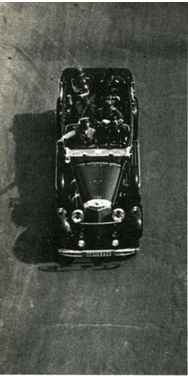
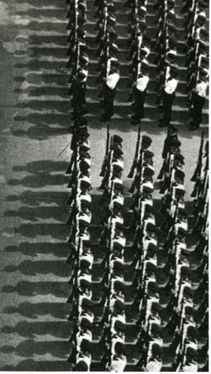
Hitler's personal Grosser was used mostly on state occasions, especially as a parade car in which be could ride around the Nuremberg square in style. However, der Fuhrer had been known—from time to lime—to take the wheel from his chauffeur. Erich Kempka, and drive himself to his mountaintop retreat in Berchtesgaden. It seems Hitler got exhilarating kicks from the sense of power he achieved by lead-footing this gas-eating behemoth. On such occasions, he reportedly gave propaganda chief Joseph Goebbels the shakes by throttling up and over 100 mph, As a result, Goebbels would often go out of his way to avoid riding with his Fuhrer—a fright which i.in lie all the more appreciated when you remember that Goebbels was so devoted to Hitler that he murdered his six children and committed suicide with his wife in order to die by Hitler's side in 1945.
But Hermann Goering, who also drove often with Hitler, apparently shared the fascination for the powerful auto. He encouraged Hiller to drive fast and use the supercharger to take maximum advantage of the car's speed. However, quite the opposite of Goebbels, Goering refused to die with der Fuhrer and, in the end, deserted him (Note: Not an all-together accurate statement.).
With the supercharger, the Grosser's push-rod actuated overhead valve straight engine develops 230 brake horsepower by German reckoning, or over 300 bhp using the British system. In typical Mercedes fashion, the supercharger is on demand, brought into play by depressing the foot feed all the way down, whereupon the blower is engaged by a multiple disc steel clutch with spiral bevel gears; and running in an oil bath. It is easy to imagine how much assistance the supercharger provides in getting one of these five-ton monsters into the highest cog.
Besides the supercharger, the Grosser 770 (or 7.7 liter displacement) has several other features useful in pushing around its great bulk. The transmission has five speeds forward with overdrive, and synchromesh on the second to fifth gears. The ignition is a dual system with two spark plugs per cylinder. An auxiliary ignition liming control is located at the center of the steering wheel.
The carburetor is dual with a thermostatically heat controlled twin intake manifold. Twin chrome-plated flexible exhaust pipes lead out directly from the hood.
In addition In the special equipment designed to get the Grossers moving, Mercedes also designed special brakes to slop it. The four-wheel hydraulic service brakes have two positively anchored internal expanding shoes in ribbed drums. The brake pedal actuates two independent mailer cylinders, one for the front and the other for the rear brakes. An automatic vacuum power booster minimizes the foot pressure required to roll the car to a stop.
The suspension is unusually interesting, being the only instance where Mercedes has used the De Dion type rear end on a passenger car. This system is properly termed semi-independent suspension, for the rear wheels are located at the ends of a non-driving rear axle (De Dion tube), while the differential is mounted to the frame. Pivoted half-axles then drive the rear wheels through universal joints. Coil springs on each wheel—plus dual action hydraulic shock absorbers—thus provided Hitler with a cushiony ride as he sped over roads in the Bavarian Alps.
To further insure Hitler’s comfort, every possible convenience was built into the ear. The right front seat has folding left and right arm rests for der Fuhrer, and the seat itself folds up to allow standing for parade reviewing. On the inside of the right front door, the built-in pistol case is padded to the contours of a Luger. All six side windows and the windshield roll up and down with heavy-duty mechanisms, and a real leather-covered armor plate shield can be cranked up behind the back scat to provide almost all-around protection. But the convertible top is ordinary canvas, lined with mohair, that would not stop a bean-shooter pellet.
The dashboard, with over 40 instruments, switches, dials, and levers, includes full accessories: tachometer, heater, defroster, radio, and pop-nut turn signals which are illuminated with red lights. Under the hood there is a convenience light for the mechanic and a tool box consisting of a set of felt-padded drawers which contain an assortment of nearly 100 items for emergency road repairs. A heavy-duty jack fits into four special mounting pads on both sides of the chassis.
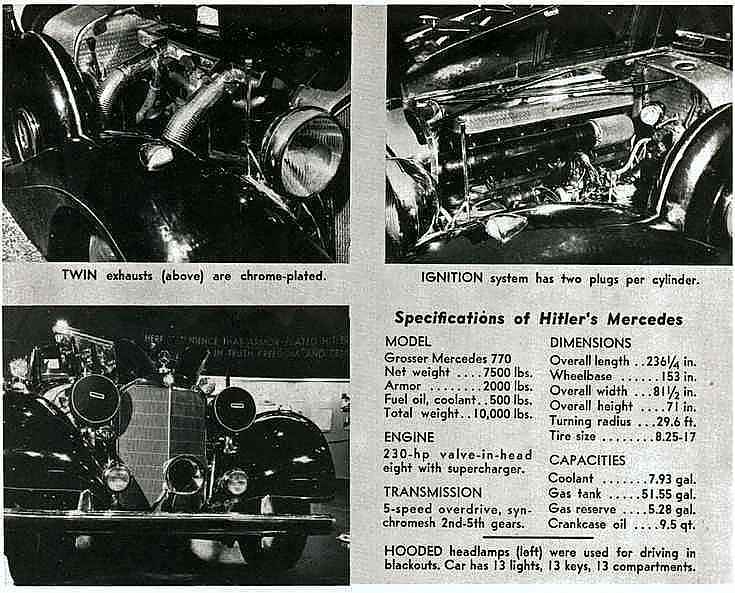
This whole five-ton rig, including 2000 pounds of armor plate and over 56 gallons of gasoline, rides on 8.25-17 tires and gets about eight miles per gallon. In the pomp and circumstance of Nazi propaganda shin-digs, the Grossers served well the purpose of contributing to the Grand Illusion. They played such an important role in Hitler's crowd swaying pageants that one young German, now working in this country, recalls that his earliest remembrances of Nazi doings center about these cars. But then the war ended. Hitler, deathly afraid of having his body strung by his feet like Mussolini's and torn to shreds by the angry masses, committed suicide in his Reich Chancellery underground bunker. In an atmosphere of tension, with the sound of bombs and gunfire penetrating even through the 20 feet or so of concrete, and with the air conditioning system spuming dust into the already choking bunker air. Hitler swallowed a lipstick-size container of cyanide potassium poison. And then be made sure of his death by firing a pistol into his mouth before the poison look hold. The blast concussion ruptured the veins on cither side of his forehead and splattered his blood all over the carpet. By his own orders, his body was then cremated—along with that of his mistress Eva Braun. who also committed suicide—under the direction of Olio Gruensche, Hitler's SS Adjutant.

But what of the Grossers, those powerful props In Nazi propaganda?
Al the time of Hitler's death, all Grossers in the Reich Chancellery garage had been destroyed by Allied bombing raids. A few more began to turn up in the hands of GIs and Tommies here and there in defeated Germany. One war correspondent. Bob Considine of the New York Journal American, reported that he a ride in one when the F.S. Army captured Hitler’s hideaway in Berchtesgaden. With several high-ranking officials, he began riding up the steep and winding road to the peak of a WHXl-fnol mounlain from which Hitler had a view of his countries. Half way up the hill, the Grosser became overheated and "blew the lop off its kettle. The steam and water rushed hack into the car and struck the most likely target there—my nose—slightly parboiling it. This was Hitler's last blow of World War II.
"The Mercedes-Benz, its 250 horses lying on their backs with their feet up in the air, just sagged there—braced against a curb. GIs passing it, in jeeps, gave it the bird."
Considine said he figured that was the last he would see of a Hitlerian Mercedes. and he was almost right since very few others have been found. However, Considine was among the thousands of Americans who saw the Grosser which. as previously mentioned, was purchased by Christopher Janus.
This particular Grosser was given by Hitler as a birthday present for Field Marshall Mannerheim of Finland—as a good will gesture when Hitler wanted the Finn's support against the Russians. However, since the people of Finland did not exactly appreciate the gift, Mannerheim seldom used it, and when Finland was invaded by Russia, he had it shipped to Sweden for safekeeping. There it fell into the hands of the government until Janus shipped ball-bearings to a Swedish firm which could not pay for them with cash. The Grosser became the exchange in a barter deal.
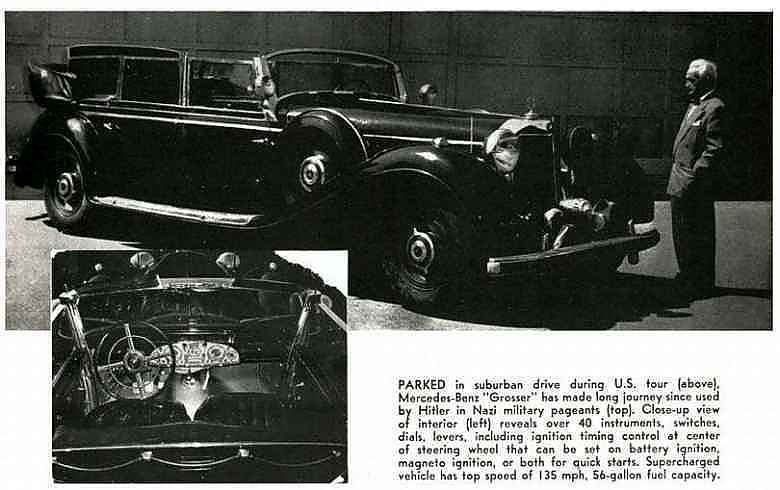
When the Grosser arrived in New York. Janus could not figure out how to start it until Mercedes-Benz agents located a secret master switch behind the instrument panel. After that, Janus exhibited the car at the New York Museum of Science and Industry, several state fairs, and loaned it to the Air Force to use in a recruiting program. Several people have offered to buy the car from him including a Chicago hoodlum who said price was no object. Janus could easily have made a profit by selling, but he preferred to exhibit it and turn the proceeds over to charitable organizations.
One other Grosser, claimed to have been the one owned by Hermann Goering, has been located by us in Canada. From time to time, a few others appear on the classic car market—for a steep price.
But Janus expresses a warning to any collector who hope to own a Grosser. He claims that after purchasing his, he received hundreds of letters and phone calls from people who take interest in the car for very odd reasons. "It's brought me several proposals of marriage, and a psychoanalyst who wanted to psychoanalyze me. Another psychoanalyst wanted to analyze the ear. Claimed he could reconstruct Hitler's character by doing so. Several people have sent gifts, including one which mystified me the most—a dozen girdles."

And most unnerving of all has been the hundreds of people who warned Janus that Hitler's ghost rides beside him in the ear. For anyone who is easily frightened by the Lon Chaney-type madmen in the Late Show horror movies, driving a car once owned by the most infamous madman of them all can be a weird experience all right—even with all 13 lights on. -David Henderson 1966

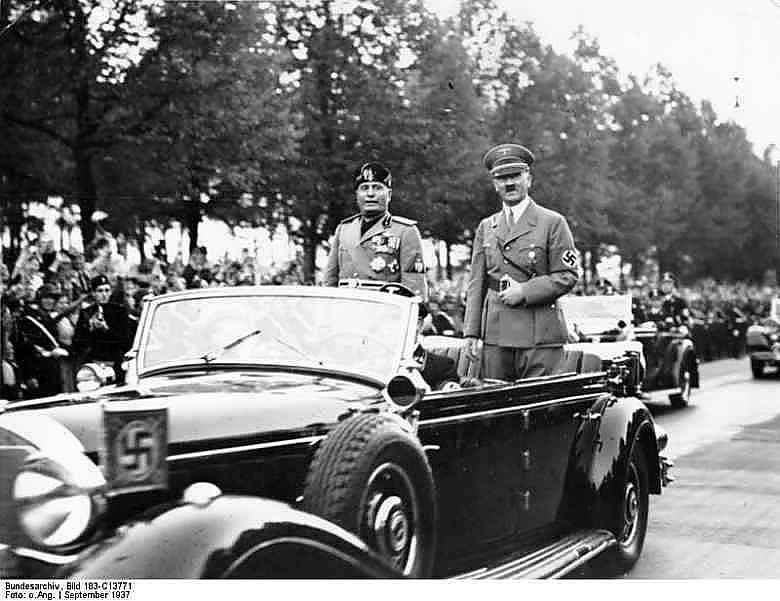


Twitter: @3rdReichStudies

































